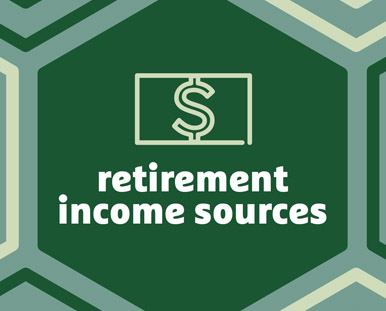As individuals approach retirement, one of the most crucial decisions that they face is how to secure a stable and reliable source of income during their golden years.
With various options available, such as annuities, systematic withdrawals from investment accounts, dividends, and rental income, retirees must navigate a complex landscape to determine which approach best aligns with their financial goals and circumstances.
In this comprehensive analysis, we will delve into the key differences between these retirement income streams, highlighting the pros and cons of each to help readers make an informed choice.
Annuities: The Foundation of Lifetime Income
Annuities stand as a cornerstone of retirement planning due to their ability to offer a guaranteed lifetime income. A life annuity involves an agreement with an insurance company, wherein an individual invests a lump sum in exchange for regular, guaranteed payments for the remainder of their life. Let’s examine the advantages and disadvantages of this approach:
Pros of Annuities
Guaranteed Lifetime Income
One of the primary attractions of annuities is the assurance of a steady income stream that lasts as long as the individual lives.
Protection Against Longevity Risk
Annuities mitigate the risk of outliving one’s savings, providing peace of mind during retirement years.
Predictability
Annuity payments are predetermined, making it easier for retirees to budget and manage their finances.
Cons of Annuities
Limited Flexibility
Once established, annuities offer limited flexibility, and the principal is typically locked into the agreement.
Lack of Liquidity
In many cases, annuities come with restrictions on accessing the lump sum, making them less suitable for emergencies or unexpected expenses.
Inflation Risk
Fixed annuities might not provide inflation-adjusted payments, potentially reducing their purchasing power over time.
Systematic Withdrawals: Tapping into Investment Portfolios
Systematic withdrawals involve gradually withdrawing funds from an investment portfolio (RRSPs, RRIFs, Non-Registered, etc.) to cover retirement expenses. This approach offers retirees greater control over their assets but comes with its own set of advantages and drawbacks:
Pros of Systematic Withdrawals
Portfolio Control
Retirees maintain control over their investment portfolio, allowing them to adjust allocations and adapt to changing market conditions.
Flexibility
Systematic withdrawals offer greater flexibility, enabling individuals to adjust the withdrawal rate as needed.
Potential for Growth
With prudent investment management, retirees have the potential to experience portfolio growth over time.
Cons of Systematic Withdrawals
Market Volatility
Systematic withdrawals are subject to market fluctuations, potentially resulting in varying income levels and increased risk during market downturns.
Sequence of Returns Risk
The order of investment returns can significantly impact the success of this strategy, potentially affecting the longevity of the portfolio.
Longevity Risk
Without a guaranteed income source, retirees might outlive their savings if withdrawals are not managed carefully.
Dividends: Harvesting Investment Profits
Dividend income involves investing in stocks that pay out regular dividends. This strategy can be appealing for retirees seeking income from their investment holdings:
Pros of Dividends
Income from Investments
Dividend-paying stocks provide a source of income while retaining the potential for capital appreciation.
Potential for Growth
Companies with a history of increasing dividends might offer income that keeps pace with inflation.
Diversification
A well-constructed dividend portfolio can provide diversification across various industries and sectors.
Cons of Dividends
Market Dependency
Dividend payments are subject to the financial performance of the companies, which can be influenced by market conditions.
Dividend Cuts
Companies may reduce or eliminate dividends during economic downturns, affecting retirees’ income. This can provide a certain level of unpredictability.
Higher Risk Profile
Investing in individual stocks carries higher risk compared to other income streams like annuities.
Rental Income: Real Estate as a Source of Cash Flow
Investing in rental properties involves owning real estate assets and generating income through tenant rent payments. This approach combines income and potential property value appreciation:
Pros of Rental Income
Diversified Income
Rental income provides an alternative source of income that is not directly tied to financial markets.
Property Appreciation
Real estate investments have the potential for property value appreciation, contributing to long-term wealth.
Tax Benefits
Rental property ownership offers various tax deductions that can enhance overall returns.
Cons of Rental Income
Property Management
Managing rental properties requires time, effort, and potentially additional expenses for maintenance and repairs.
Market Fluctuations
Real estate markets can be volatile, impacting property values and rental demand.
Illiquidity
Real estate investments are relatively illiquid, and converting property to cash quickly can be challenging.
Conclusion
Choosing the right retirement income stream is a decision that requires careful consideration of one’s financial goals, risk tolerance, and preferences. Annuities offer guaranteed lifetime income and protection against longevity risk, while systematic withdrawals provide flexibility and portfolio control. Dividends offer income from investments but come with market dependency, and rental income combines cash flow and potential property appreciation at the cost of property management demands.
Ultimately, the ideal retirement income strategy may involve a combination of these approaches, tailored to individual circumstances. Retirees are encouraged to consult with financial advisors to create a comprehensive plan that aligns with their goals and secures a comfortable retirement.

